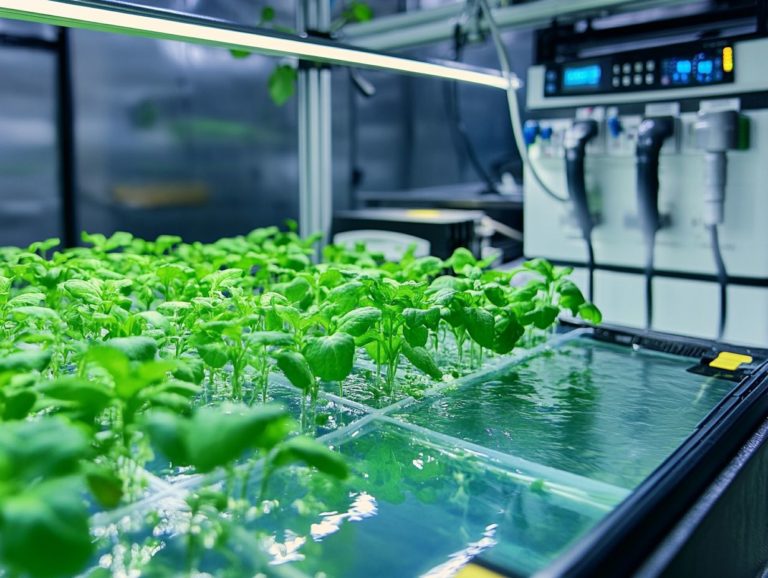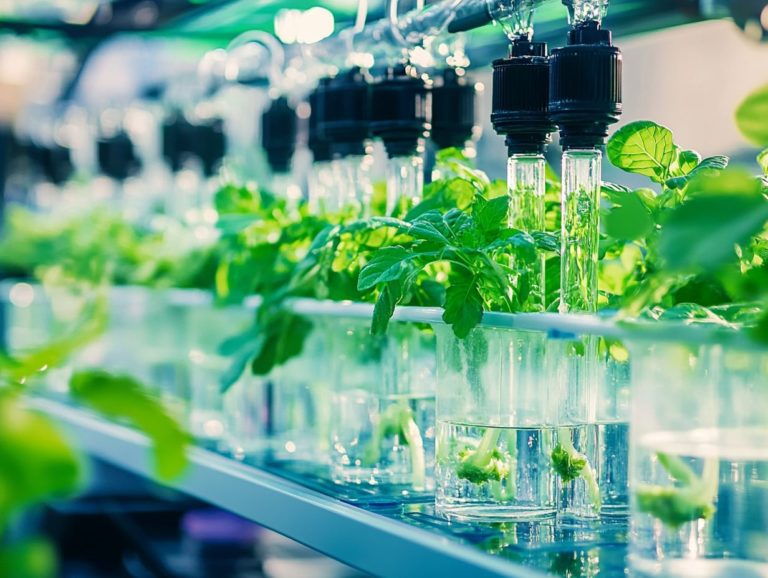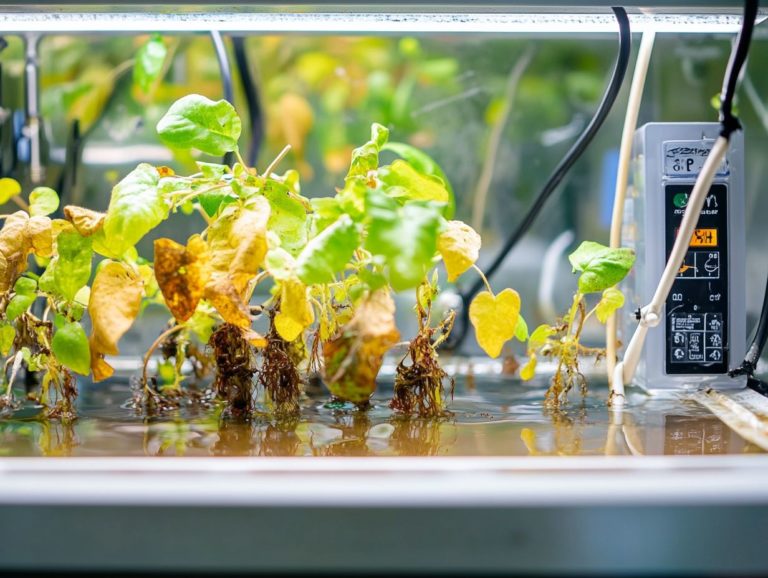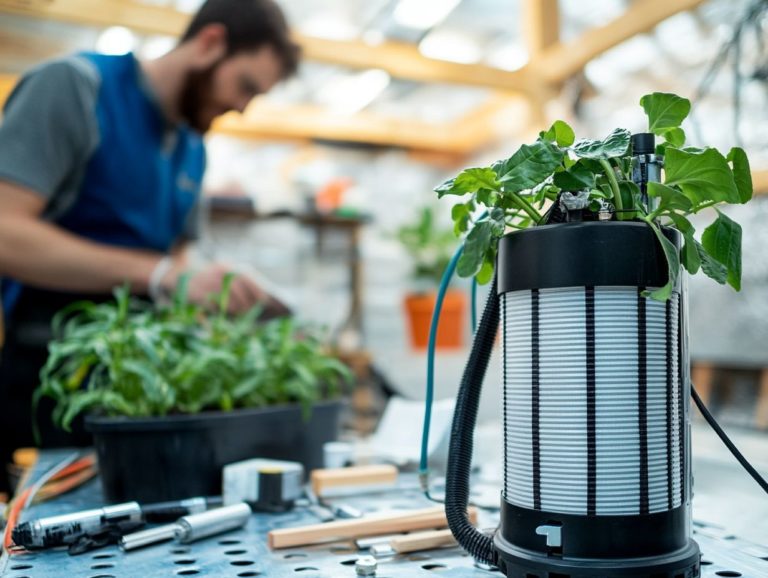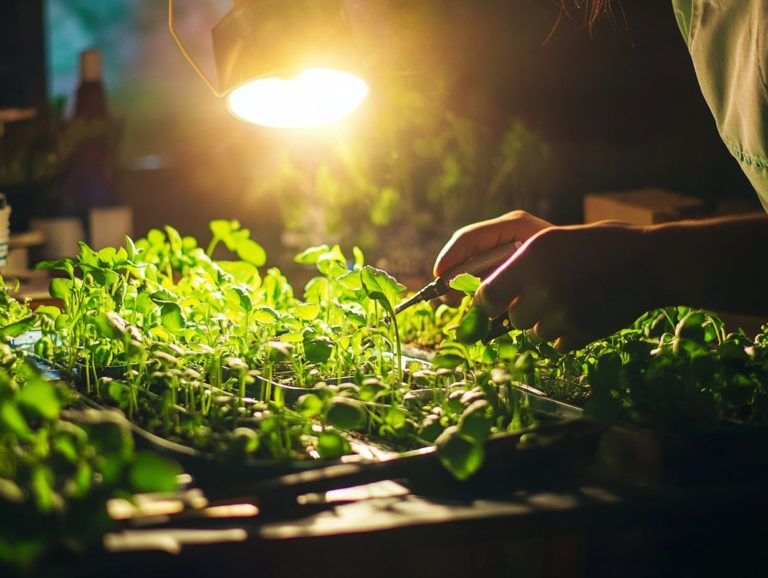How to Manage Hydroponic System Downtime
Hydroponic systems have the potential to transform your gardening journey, but they also bring their own set of challenges, especially when it comes to downtime. Grasping the definition and causes of this downtime is essential for you as a grower. If not tackled swiftly, the effects on plant growth, yield, and quality can be quite substantial.
This guide provides you with effective strategies to prevent and manage downtime, troubleshoot unexpected issues, and minimize losses during those critical moments. Whether you re a seasoned pro or just starting out in the world of hydroponics, these insights will empower you to keep your system thriving.
Contents
- Key Takeaways:
- Understanding Hydroponic System Downtime
- Impact of Downtime on Plant Growth
- Preventing Downtime in Hydroponic Systems
- Dealing with Unexpected Downtime
- Minimizing Losses During Downtime
- Frequently Asked Questions
- What is hydroponic system downtime?
- Why is it important to manage hydroponic system downtime?
- What are some common causes of hydroponic system downtime?
- How can I prevent hydroponic system downtime?
- What should I do if my hydroponic system experiences downtime?
- How can I minimize the impact of hydroponic system downtime on my plants?
Key Takeaways:
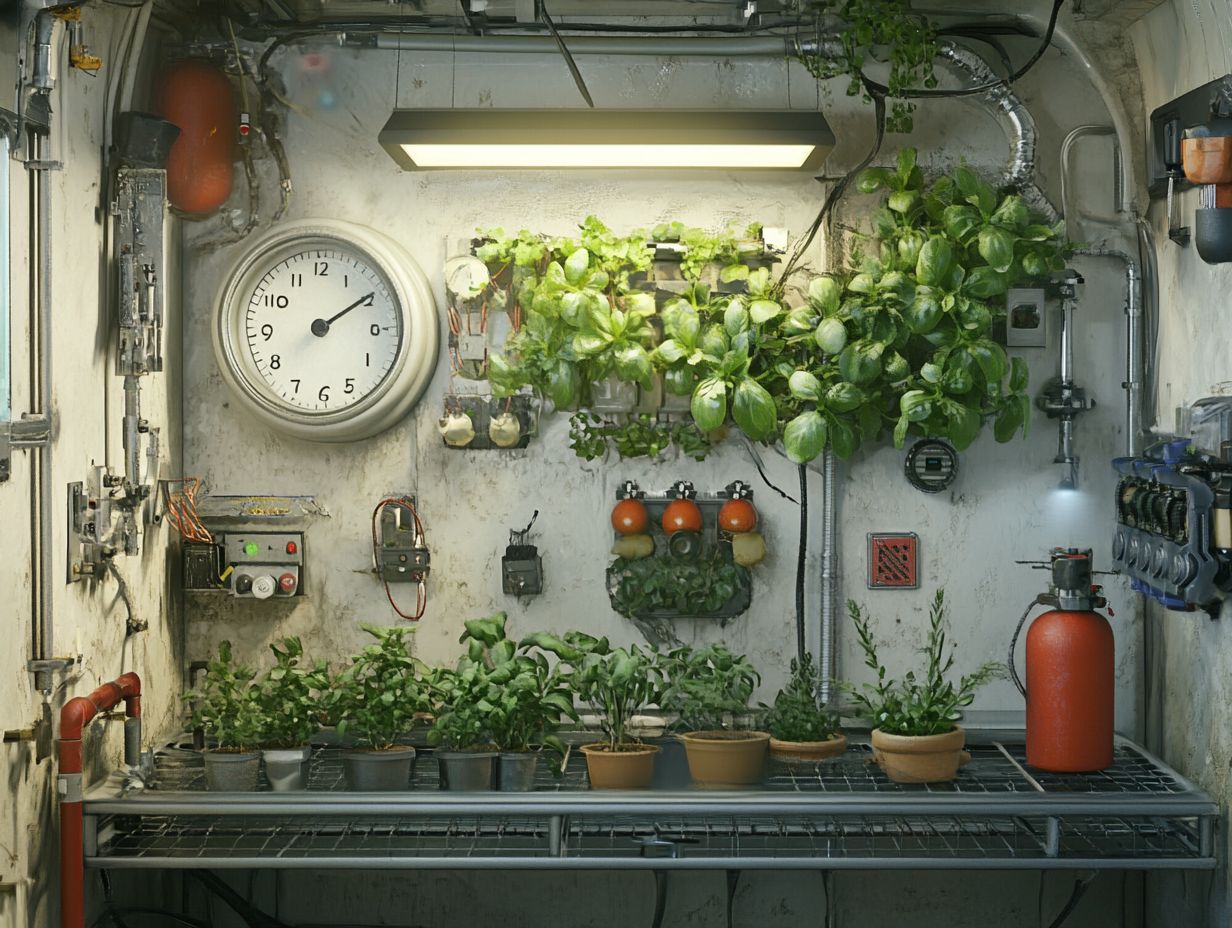
- Keep your system running smoothly with proper maintenance and smart prevention techniques!
- Downtime can significantly impact plant growth, yield, and quality, making it important to address and mitigate issues as soon as possible!
- In the event of unexpected downtime, having troubleshooting plans and strategies in place can help minimize losses and protect plants!
Understanding Hydroponic System Downtime
Understanding the nuances of hydroponic system downtime is essential for cultivating a flourishing hydroponic garden. It directly influences plant growth and overall yield. Downtime can arise from a range of factors, including equipment malfunctions, power outages, or inadequate maintenance practices.
You must monitor your hydroponic system regularly, ensuring that optimal conditions are maintained, such as accurate pH (the acidity level) and EC (electrical conductivity indicating nutrient concentration) levels in your nutrient solution. By keeping a close eye on these elements and promptly addressing any issues, you can prevent significant downtime. This safeguards the health and productivity of your plants.
Definition and Causes
Downtime in hydroponic systems refers to those frustrating moments when your setup can’t function at its best, often due to pesky issues like equipment failure or unexpected power outages. This interruption can significantly impede plant growth since hydroponic systems depend heavily on a steady supply of nutrients, water, and light.
Factors that contribute to downtime may include maintenance challenges, malfunctioning pumps, or even a slip-up in system management. When disruptions happen, the delicate balance necessary for root health and growth is thrown off, leading to stunted or leggy plants. To address these issues effectively, refer to our guide on how to troubleshoot common hydroponic issues.
Understanding and tackling these potential causes is essential for you as an operator. By being proactive, you can implement preventive measures that ensure your plants receive the optimal care they need. This approach ultimately maximizes your yields and maintains the health of your entire system.
Impact of Downtime on Plant Growth
The impact of downtime on plant growth can be substantial, resulting in diminished yields and compromised produce quality. During these periods of inactivity, essential factors that contribute to healthy plants such as nutrient solution delivery, optimal light cycles, and humidity levels can be disrupted.
This interruption places stress on the plants, paving the way for complications like root rot, inefficient nutrient uptake, and heightened vulnerability to pests such as spider mites.
Effects on Yield and Quality
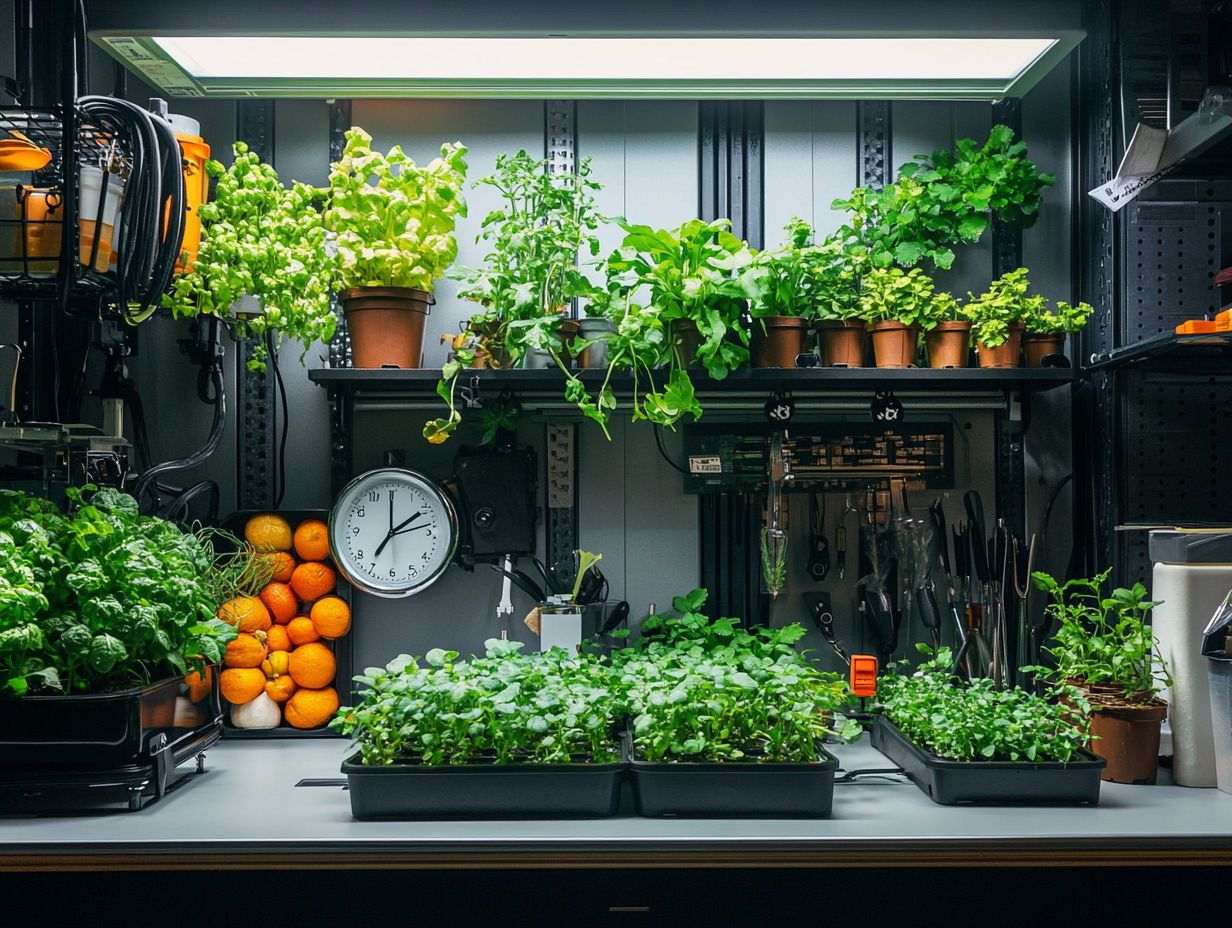
The impact of downtime on yield and quality in a hydroponic system is significant. It leads to reduced growth rates and unhealthy plants. When interruptions occur in your hydroponic system, they disturb the nutrient balance vital for fostering strong plant development.
Without consistent access to nutrients, deficiencies can arise, exacerbating problems like root rot, which thrives in unstable environments. Healthy plants depend on a meticulously maintained system, where optimal conditions are essential to prevent stress factors that could impede their growth.
By ensuring system uptime, you maintain the delicate equilibrium of moisture, light, and temperature, thereby safeguarding plant health and maximizing your yields over time!
Preventing Downtime in Hydroponic Systems
Prevent downtime in your hydroponic systems by focusing on consistent plant growth and high yields through smart maintenance.
Regular weekly and monthly maintenance helps keep your system running smoothly. This reduces the risk of pump failures or nutrient imbalances.
Investing in a backup power source gives you peace of mind against unexpected outages. It ensures that essential components like water pumps and air circulation systems keep working, even during power failures.
Best Practices and Maintenance Tips
Using best practices and maintenance tips helps your hydroponic garden thrive.
A key step is regularly cleaning the reservoir to boost your plants’ health. Keeping your nutrient solutions pure fosters thriving growth and minimizes disease risks.
Monitor nutrient levels and pH closely, as changes can affect plant health. Following disinfection guidelines when changing resins or media can prevent bacterial contamination.
Hydroponic kits simplify these tasks. They provide essential tools, making it easier to manage your system effectively.
Dealing with Unexpected Downtime
Facing unexpected downtime? A proactive approach is vital. This includes effective troubleshooting and emergency measures to protect plant health.
Whether addressing algae growth from system failures or executing deep cleaning, having a clear protocol helps protect your garden during tough times. This preparation keeps plant growth uninterrupted.
Troubleshooting and Emergency Measures
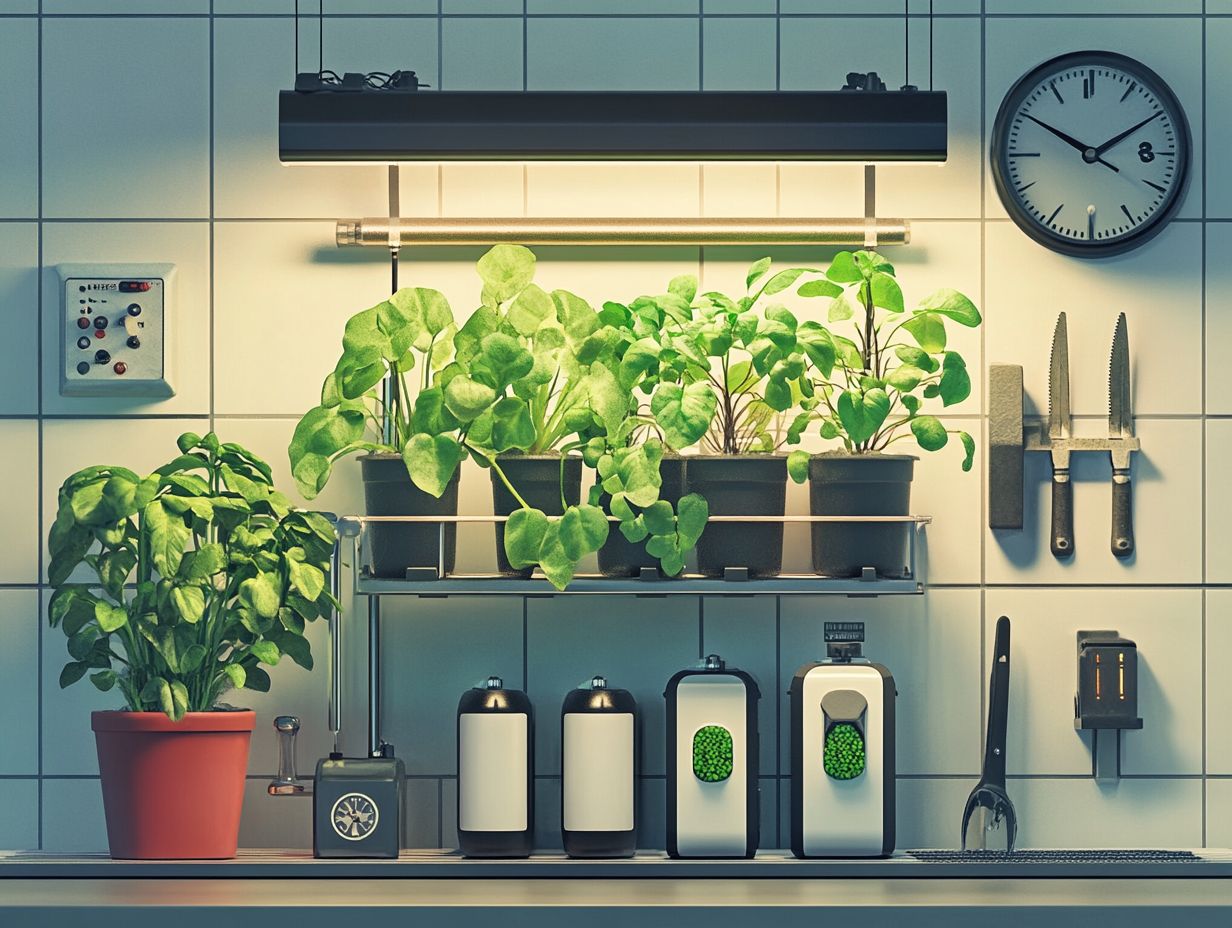
Effective troubleshooting and emergency measures restore your hydroponic system during downtime.
Spotting signs of impending problems can save you time and resources. If the water pump fails, start by checking the power supply and connections.
If the issue persists, inspect the tubing for blockages. Interruptions in the light cycle can harm plants, so check the timer or bulbs.
Addressing these issues promptly protects your crops and enhances your growing experience.
Minimizing Losses During Downtime
Minimizing losses during downtime is vital for your plants. This ensures growth continues even during interruptions.
Effective strategies like maintaining optimal air circulation and monitoring nutrient solution levels significantly reduce downtime’s impact.
Prepare in advance with a clear response plan to protect your plants from stress and potential losses.
Strategies for Protecting Plants
Implementing effective strategies for protecting your plants during hydroponic system downtime is vital for maintaining their health and productivity.
During these interruptions, it’s critical to ensure that your plants have access to clean, pH-balanced water. Regularly checking water quality and making necessary adjustments can prevent nutrient deficiencies that could hinder growth.
Monitoring humidity levels plays a key role in creating a stable environment, minimizing stress on your plants.
Maintaining optimal temperature is equally important; using backup heating or cooling systems ensures that fluctuating temperatures won’t adversely affect growth.
By systematically addressing these factors, you can significantly mitigate the risks associated with system failures and help sustain the vitality of your plants.
Frequently Asked Questions
What is hydroponic system downtime?
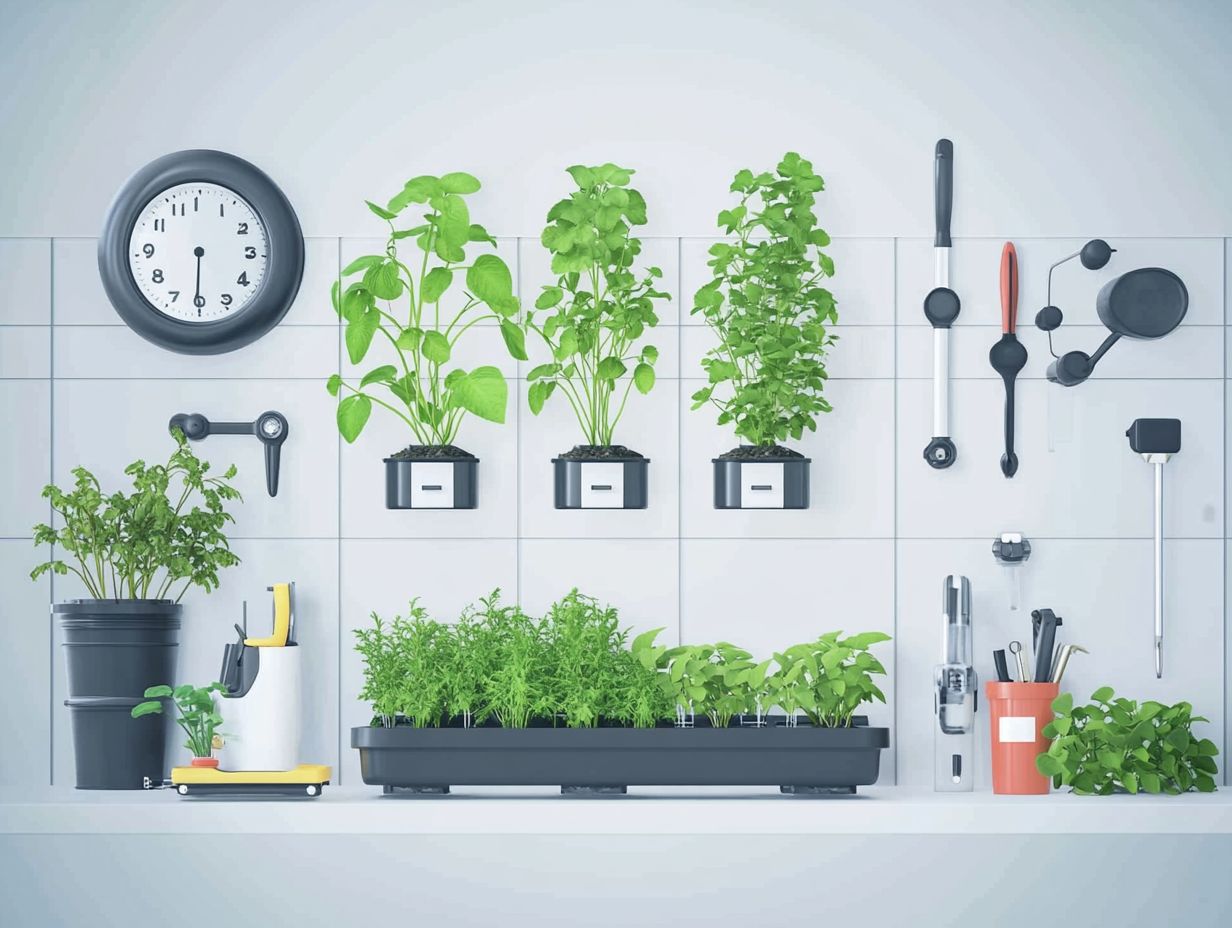
Hydroponic system downtime refers to the period when the hydroponic system is not functioning properly or is completely shut down. This can be caused by various factors, such as equipment malfunction, power outages, or maintenance issues.
Why is it important to manage hydroponic system downtime?
Managing hydroponic system downtime is crucial because any interruption can negatively impact plant growth and production, leading to potential financial losses for the grower.
What are some common causes of hydroponic system downtime?
Common causes include power outages, equipment malfunction, clogged irrigation lines, and nutrient imbalances. Regularly checking and maintaining the system is essential for preventing these issues, such as ensuring proper EC levels (which measure nutrient concentration) and pH levels (which indicate acidity or alkalinity).
How can I prevent hydroponic system downtime?
To prevent hydroponic system downtime, regularly inspect and maintain all components of the system, including pumps, filters, and irrigation lines. It is also helpful to have backup equipment and power sources in case of emergencies.
What should I do if my hydroponic system experiences downtime?
If your hydroponic system experiences downtime, the first step is to identify the cause of the issue. Once identified, act quickly to fix the problem. This may involve replacing broken parts, adjusting nutrients, or cleaning any blockages.
How can I minimize the impact of hydroponic system downtime on my plants?
To minimize the impact on your plants, have a backup plan in place. This may include having spare equipment, implementing a backup power source, or setting up a temporary irrigation system.
Using clean water and regularly checking pH and EC levels can also help prevent downtime and mitigate its effects on plant growth. Using bleach or hydrogen peroxide for cleaning helps reduce organic residues that might clog the system. Finally, introducing beneficial insects like ladybugs can enhance plant health and resilience.


